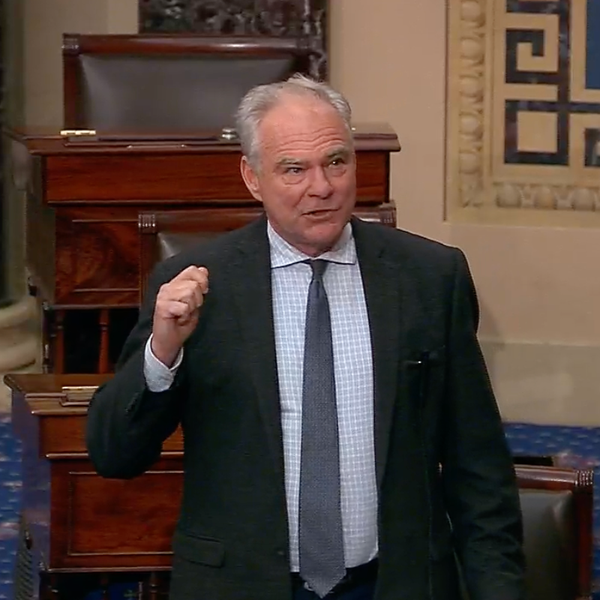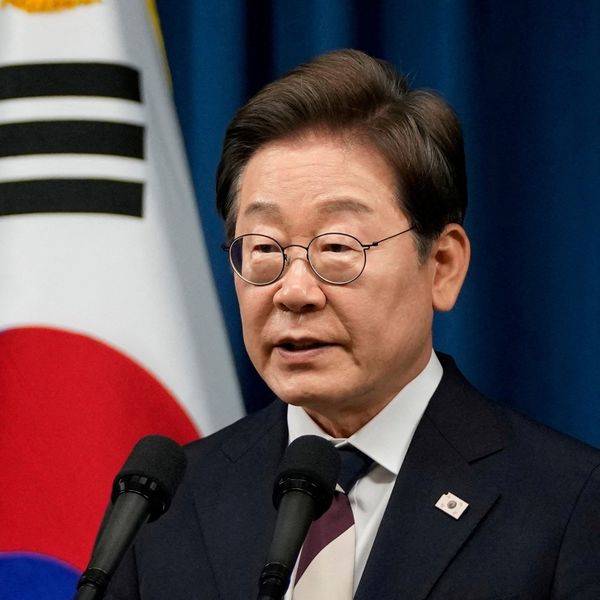In the rush to grant a statutory waiver to retired General Lloyd Austin and confirm him as the 28th Secretary of Defense, the Senate — the world’s greatest deliberative body, we are told — gave no consideration to what, largely unrecognized, is the central challenge facing Austin going forward: the current state of civil-military relations in this country.
Simply put, U.S. civil-military relations are, and for at least the past three decades have been, in a continuing state of crisis. To claim crisis, of course, is to risk charges of alarmist hyperbole. That’s why in the past, previous charges of crisis so quickly devolved into less inflammatory rhetorical claims of a civil-military “gap.”
This isn’t a palpable, urgent crisis like the Covid-19 pandemic, or climate change, or the collapsing economy. There’s no threat of a military overthrow of the government, nor of units disintegrating in combat, nor of mass military resignations or open defiance of orders. Rather this is a crisis more like an insidious termite infestation or lymphoma that destroys from within.
The most recent evidence of crisis was ex-President Trump’s shameless, sustained politicization of the military – and, arguably, the military’s concomitant willingness to be politicized. Beyond such blatant politicization, though, there has been plentiful evidence over the last decade — including manifold operational failures, atrocities, corruption, fraud and waste, friendly fire incidents (and cover-ups), failed weapon systems, sexual assault, and abundant other forms of misconduct (even among senior ranks) – that a crisis exists.
Literally hundreds of such incidents occur annually and have since at least the start of the Clinton administration; yet this sustained profusion of misbehavior is invariably written off by institutional defenders and uncritical observers as a reflection of just a few bad behavioral apples in an otherwise healthy cultural barrel. Thus oblivious to underlying systemic problems, the public consistently rank the military at the top of American institutions in terms of public trust and confidence.
A perhaps more fundamental, less impressionistic approach to judging the health of civil-military relations is to consider what an ideal state of relations would look like, were one to exist. One could argue that it would consist of these key elements: a strategically effective military whose leaders and advisors provide sound advice to strategically competent civilian officials (elected and administrative), who are representative of and answerable to an informed, civically engaged public. This would all be undergirded by a critical free press, a vibrant civil society and what we might call a properly subordinated military-industrial complex. Where any of these elements is absent, civil-military relations could be said to be in ill health.
From this picture emerges questions the new Secretary of Defense should ask himself, “his” military, and his overseers:
Is the U.S. military strategically effective? No. It no longer wins wars. It doesn’t prevent war, writ large (though some think it prevents wars, writ small). And it doesn’t produce peace (a failure of insulting proportions for all who think preparing for war is the best, if not the only, way to produce peace). Even a military that is considered effective at war but is disproportionately destructive, or indiscriminately lethal, or exorbitantly expensive, or overly provocative and escalatory, or unduly consumptive, or alienated from society — all of which our military is — is strategically ineffective at best, dysfunctional at worst.
A military that, in narrowly providing for the common defense, undermines the other precepts embodied in America’s security credo, the Preamble to the Constitution — national unity, justice, domestic tranquility, the general welfare, liberty — is strategically ineffective. A military that precipitates and nurtures domestic and international militarism, that glorifies lethality and perpetuates nuclearization, while thereby failing to make progress toward the overarching normative aim of enduring universal peace, is strategically ineffective.
A military that projects imagery of arrogance and hypocrisy in place of credibility and legitimacy — born of practicing what one superciliously preaches to others — is ineffective. Most fundamentally, a military that fails to fulfill the expectations of the other parties to the social contract of civil-military relations — by being operationally competent, politically (and ideologically, religiously, and culturally) neutral, and socially responsible — is ineffective. Every time atrocities and collateral damage are perpetrated; every time those in uniform acquiesce to being political props, or fail to push back against politically self-serving direction; every time sexual assault, racial and homophobic bigotry, or sundry forms of waste and corruption occur, these expectations are dashed.
Are the military’s leaders a source of sound strategic advice? No. When the military’s senior leaders uncritically adopt the notion that their proper ambit is nothing more than “sound military advice”; when they demonstrate an inability to distinguish defense from security; when they parrot trite shibboleths that war’s nature is unchanging, that preparing for and waging war is the surest path to peace, or that the wars of today are actually winnable (if waged on our preferred terms), then they show themselves incapable of sound strategic advice.
When these military leaders simplistically conflate low, partisan politics (where they don’t belong) with the high politics of statecraft (where they do belong); when they are devoid of ideas for successfully resolving America’s forever wars; when they adhere to the triteness of “warfighting” and “warfighters” as the military’s canonical raison d’etre, they are ineffective. When they subscribe, even if subconsciously, to the established “American Way of War” — killing people and breaking things as lethally and destructively as possible — as appropriate for the asymmetric, hybrid wars we invariably face, they are ineffective. When they propagate backward-looking, Old War-oriented ideological tracts posing as bona fide strategy (as with the 2018 National Defense Strategy), then they again betray their a-strategic intellectual limitations.
Are the civilian authorities charged with overseeing and directing the military strategically competent? Judging from those who populated the Trump administration — by objective standards the most inept, intellectually vacuous, politically obsessed aggregation of malpractitioners in recent memory — the answer is no. Civilian authorities hold the key to “the deal” that lies at the heart of civil-military relations: in return for the deference, obedience, compliance, and silence those in uniform willingly give, they expect and deserve in return strategic literacy, competence and leadership from their civilian minders.
Like James Mattis before him, Secretary Austin will be tested to see whether he is capable of rising above and stepping outside 40 years of socialization in uniform to assume the strategic perspective that tactician Mattis failed to demonstrate. Unlike Mattis, he will not have to choose between allegiance to the military as an institution or to his boss, the commander-in-chief, because Biden, unlike Trump, will not seek to ignore or subvert established norms and limits of propriety.
These are all questions that generally exist within the secretary of defense’s purview and thus demand his assiduous attention. Other questions associated with an ideal state of civil-military relations — the awareness and engagement of the public at large, and the existence of a critical free press committed to truth, a vibrant civil society committed to accountability, and a properly subordinated military-industrial complex — remain for the secretary’s civilian superiors and the rest of us to attend to with continuing seriousness in the months ahead.















